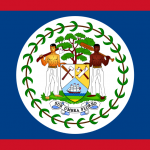Zero Hunger: our actions today are our future tomorrow

Damage and loss assessment in the agriculture sector: the first step towards livelihoods resilience
OP-ED By Anna Ricoy, Regional Disaster Risk Management Officer for Latin America and the Caribbean,Food and Agriculture Organization of the United Nations (FAO)
Scientific evidence for warming of the climate system is unequivocal. Climate change is resulting in more frequent and intense extreme events that take a heavy toll on food production, food security, and people’s livelihoods, and reverse development gains.
Results from a 2017 study from the Food and Agriculture Organisation of the United Nations (FAO) titled, “The Impact of Disasters and Crises on Agriculture and Food Security”, revealed that between 2006 and 2016 the agriculture sector alone absorbed 23% of total damage and loss caused by medium to large scale natural disasters worldwide.
At the national, these numbers can represent a significant percentage of GDP or even exceed it. In Dominica, for example, the losses of Hurricane Maria in 2017 represented 224% of its GDP. Moreover, the repercussion of the impact in Dominica had implications to many other islands in the region, as the country is an important supplier of food for the Eastern Caribbean.
Across the globe, Small Island Developing States (SIDS) are particularly vulnerable to natural disasters especially hurricanes, storms, floods, drought and tsunamis. Economic losses in SIDS stemming from disasters jumped from USD 8.8 billion for the period 2000 – 2007 to over USD 14 billion between 2008 –2015, the report shows.
However, despite being one of the most vulnerable sectors to natural hazards, the impacts on agriculture, and notably the direct economic damages and losses caused by these events, are rarely quantified. Additionally, without a record of losses in monetary value, it is arduous to assign regular and sufficient budgetary allocations for comprehensive risk management and adaptation to climate change in the agricultural sector.
In order to fill this gap, FAO has developed a corporate “Damage and Loss (D&L) methodology for the evaluation of damage and losses in the agriculture sector and its sub-sectors, including crops, livestock, fisheries, aquaculture and forestry. It is grounded on a standardized set of procedural and methodological steps that can be used at global, national and subnational levels. The newly developed methodology will support developing countries in the collection and analysis of data in order to build holistic information systems on the impact of disasters and crises on agriculture. By systematically improving disaster damage and loss assessment, FAO’s work will directly contribute to implementing and monitoring the achievement of specific targets of the SDGs and indicators of the Sendai Framework. In Latin America it has already being adopted by Chile, Uruguay, Bolivia and Paraguay.
To address the shortcomings and to build capacities in Caribbean SIDS, the sub-regional workshop “A harmonized approach for conducting Post-Disaster Needs Assessment and Damage and Loss Analysis and Reporting in the Agriculture sector” was held in Port of Spain, Trinidad and Tobago from 17-18 September 2019. The workshop was carried out with the participation of the local government authorities as well as representatives from Grenada, Guyana, Haiti and St. Lucia.
The adoption and institutionalization of standardized evaluations on damage and loss in the agriculture sectors will enable to ensure consistency and comparable results across countries and sub-regions. Data and evidence on how disasters affect agricultural livelihoods will allow for the development of targeted and appropriate policies, strategies and financial mechanisms for risk reduction and resilience building in the agriculture sectors.
Source: CARICOM TODAY

 Previous Post
Previous Post Next Post
Next Post